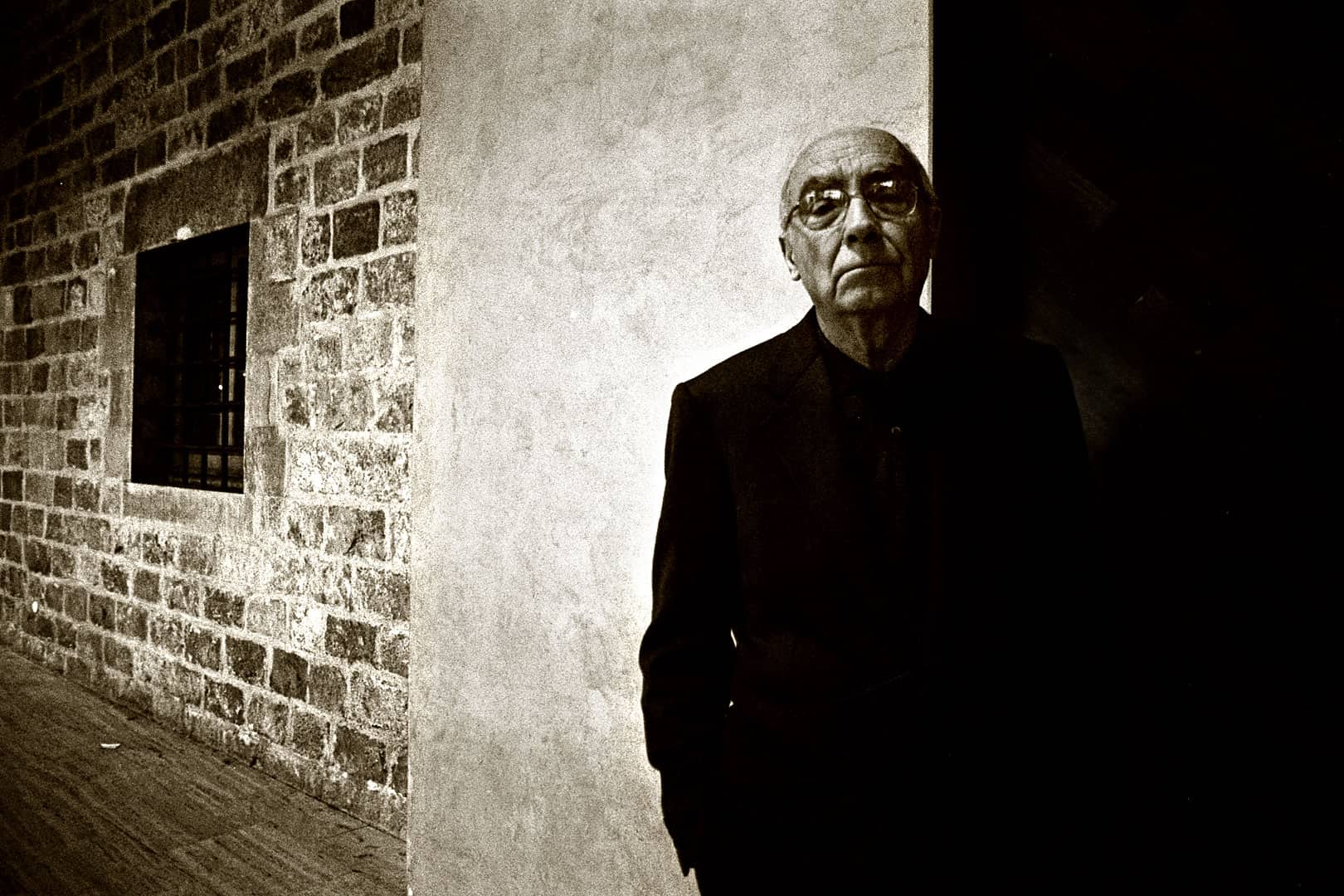It’s 2003, and I’m studying Journalism at Pompeu Fabra University in Barcelona. I have a portrait assignment due for the Press Photography course, taught by Pedro Madueño, a great photographer whose speciality are portraits. This means I need to find someone notorious and get a good shot. The first won’t be hard. One of the great things of living in Barcelona is that there are always events happening. Conferences, exhibitions, book presentations, round-table discussions. I scour the newspaper’s cultural guide and there it is: José Saramago will be signing books in teh afternoon at Drassanes, a venue located just 100 metres away from the Faculty of Journalism. I head over there immediately.
Note: In the Press Photography course we do things the old-fasioned-way. Analog cameras with film that we load by hand, and then we get our hands wet with all those smelly chemicals in the red-lit dark room.
I arrive at the location and spot the Nobel Prize winner patiently signing books, despite the long queue. This is going to take longer than I thought. Over the next two hours, I check the light conditions of the hall, scout for suitable spots to take the photo, and ponder how to approach him. I find the event coordinator and explain my assignment. She tells me, “Okay, but you’ll have to ask him yourself”.
I hope he is not in a rush, as he continues signing books with patience. My selected spot is on the way out, in the space left by a large sliding wooden door.
Finally the last book is signed and my wait is over. The man stands up and his entourage heads towards the exit, right where I’ve positioned myself. He has likely noticed me holding the camera and probably guesses my intention. When he reaches my spot, I politely ask him for a few seconds of his life so I can take a picture of him. He agrees, serious and kind at the same time, and asks where I’d like to set up the shot. I tell him “right here” and I point to the space left by the sliding door.
Just as he is about to step into place, a woman interrupts us, and says “not here, there’s a draft” (later I learn she is Pilar del Río, his wife). She is right. He’s an old man and could catch a chill. I have to improvise and I just say “Okay, then… how about there?” and I point two meters to the left.
My improvised plan is to simply use the blank wall as a backdrop. As I peer through the viewfinder, I notice a window in a stone wall to the left and I shift the angle. He faces me and instinctively places his hands in his pockets. I take a couple of seconds to adjust the shutter and focus on his eyes—click! Just one shot.
I thank him, shaking his hand, and hope that tomorrow, when I develop the film in the darkroom, the picture turns out.
